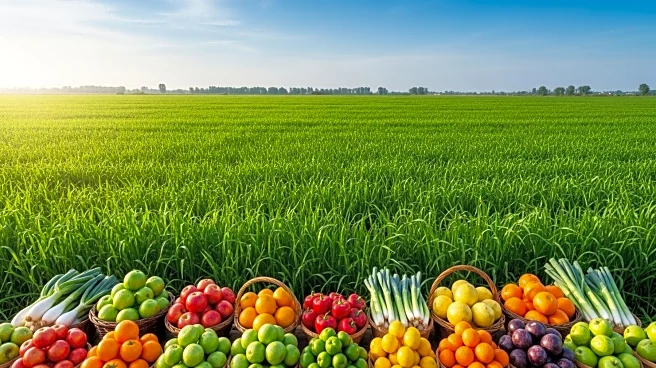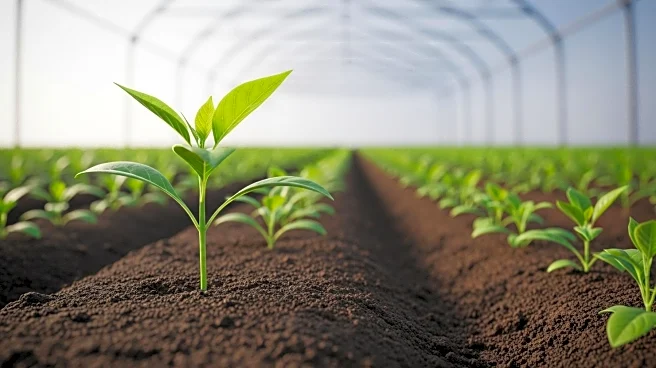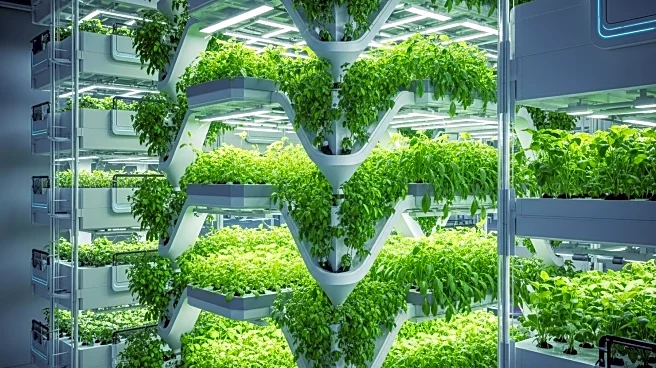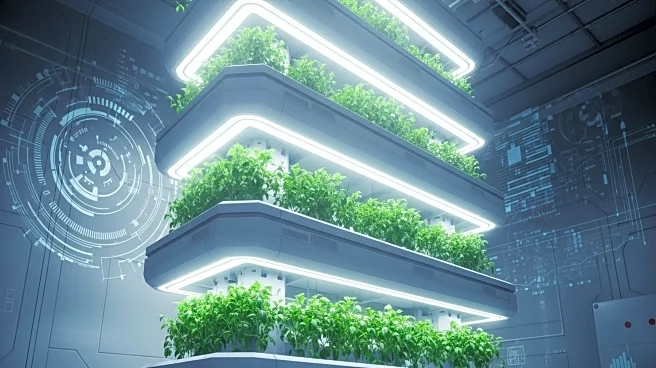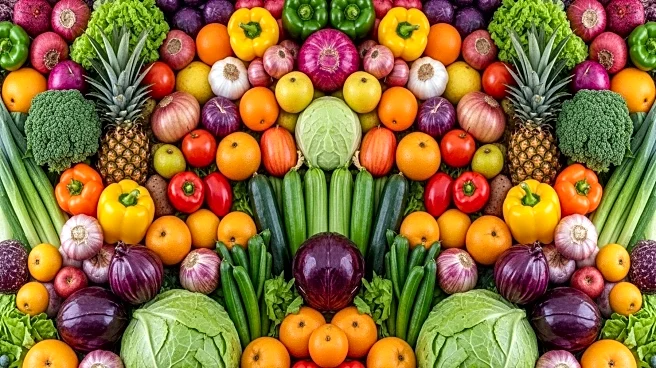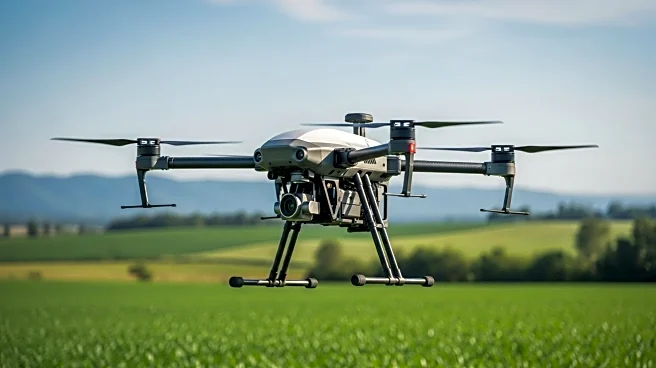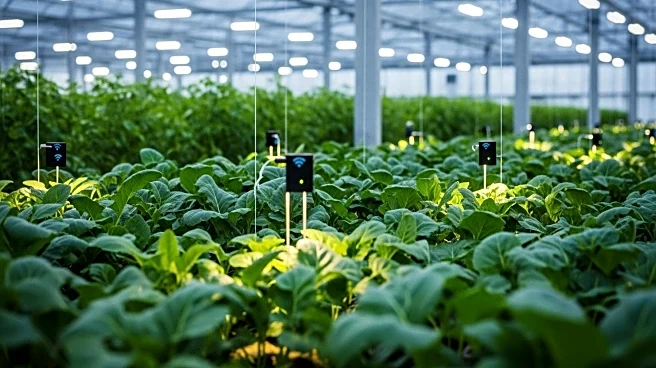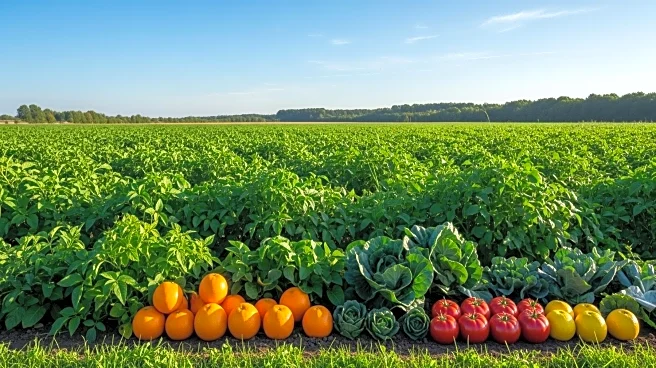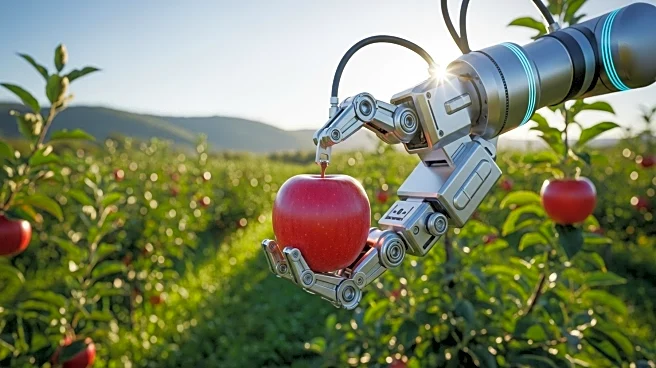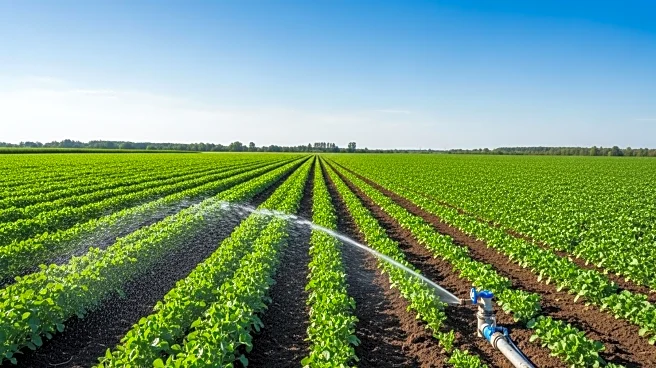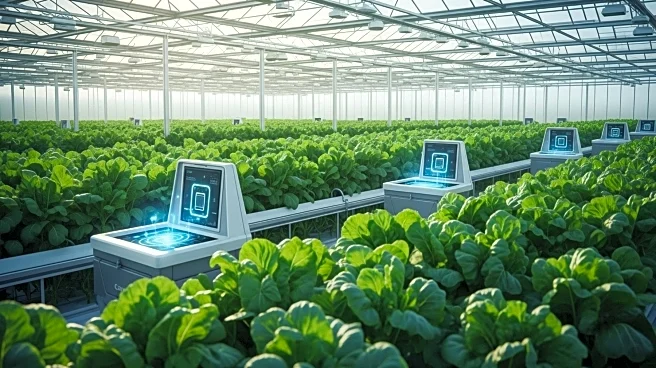What's Happening?
The Sustainable Agriculture Market is expected to grow significantly, from $22.9 billion in 2024 to $69.5 billion by 2034, at a CAGR of 11.7%. This growth is driven by increasing consumer awareness of food safety and environmental sustainability, alongside government support for eco-friendly farming practices. Key market segments include organic farming, precision agriculture, and sustainable aquaculture. Companies are investing in technologies like IoT, AI, and drones to enhance resource efficiency and crop yields. The market is characterized by intense competition among major players such as Indigo Ag, AeroFarms, and AppHarvest.
Why It's Important?
The expansion of the Sustainable Agriculture Market reflects a global shift towards environmentally responsible farming practices. This growth is crucial for addressing climate change, reducing environmental impact, and ensuring food security. As consumer demand for organic and chemical-free produce rises, companies are compelled to innovate and adopt sustainable methods. The market's growth also presents opportunities for technological advancements in agriculture, potentially leading to increased efficiency and reduced waste.
What's Next?
The market is likely to see further technological integration, with advancements in precision farming and digital solutions enhancing sustainability outcomes. Governments may continue to offer incentives and subsidies to promote sustainable practices, encouraging wider adoption. As the market evolves, companies may engage in strategic partnerships and mergers to strengthen their position and expand their offerings. The focus on sustainability is expected to drive innovation and reshape agricultural practices globally.
Beyond the Headlines
The growth of the Sustainable Agriculture Market highlights the ethical and social dimensions of farming practices. It emphasizes the need for equitable resource distribution and the protection of biodiversity. As the market expands, stakeholders must address challenges such as high initial investment costs and knowledge gaps among farmers. The shift towards sustainable agriculture also raises questions about the long-term viability of conventional farming methods and the need for systemic change.
